The demand for viable YouTube alternatives is growing — mainly because of where the video streaming giant falls short.
For example:
- An over-reliance on intrusive ads for revenue
- Questionable privacy safeguards for user data
- New and more restrictive creator guidelines
- It’s mind-boggling (and frustrating) algorithm
Let’s not bury the lede here: YouTube isn’t the only show in town.
In fact, a growing number of curious content creators and consumers are already experimenting with other platforms. And in this post, we’ll introduce you to 17 YouTube alternatives and dissect the pros and cons of each.
As a creator, you may find a better platform to build your following and make mad bank. And as a consumer, you may find a more enjoyable place to kick back and watch top-notch video content.
Let’s go.
1. TikTok
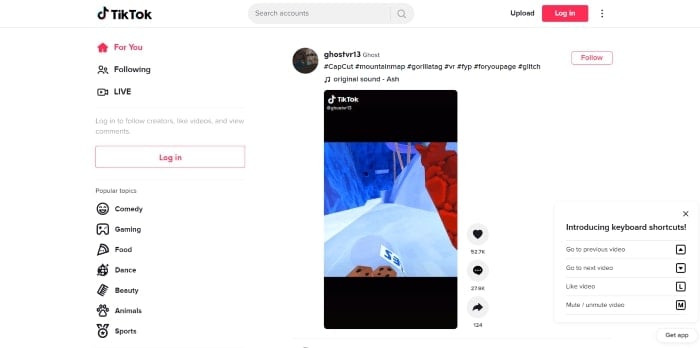
TikTok has made a name for itself by focusing on short-form videos. It’s become a favorite of content creators and influencers who prefer snack-size videos to longer, more detailed (or cinematic) ones.
Pros
- Best for creators of short-form videos
- Large and growing user base
- Growing popularity with influencers
Cons
- Not suitable for long video content
- The influencer focus doesn’t appeal to everyone
2. Dailymotion
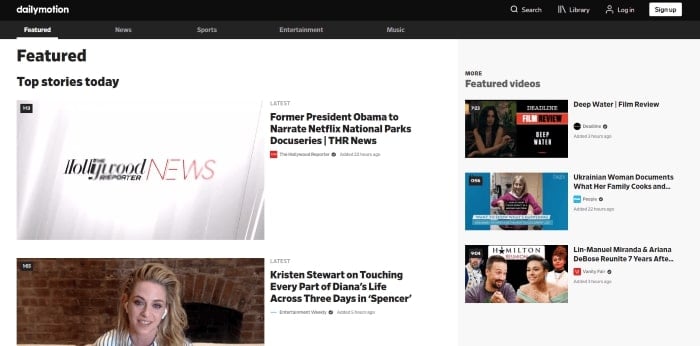
Dailymotion has a similar layout to YouTube, with a search bar and the same content categories. Users like this alternative mainly for high-quality videos. Dailymotion allows you to upload videos with a resolution of 1080p, while YouTube typically compresses them.
Pros
- Free, unlimited video uploads
- Support for HD video uploads up to 2 GB and 60 minutes long
- Similar layout to YouTube
- Fewer ads and restrictions versus YouTube
- Creators can earn money with ads
Cons
- Limits uploads to 4 GB for unpaid version
- Uses ads
- Not free if you want high-resolution videos (1080p+)
- Not popular in the U.S.
- Far smaller audience compared to YouTube
3. Vimeo
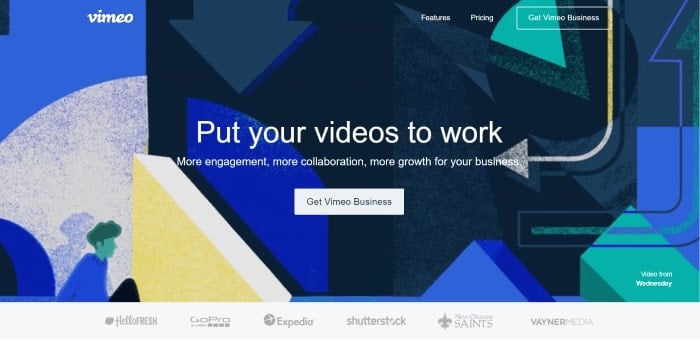
Vimeo is ad-free because it earns money from creators rather than its viewers. As a video hosting platform, it provides video sharing and hosting, as well as lead generation and analytics tools, making it a superior option for businesses and professional content creators.
Pros
- No ads
- Live-video streaming platform
- High-quality videos using 4K Ultra HD
- A community-based platform that celebrates creativity
- Feature human-curated picks and short film premieres
Cons
- The free plan limits uploads to 500MB per week
- The free plan limits video size to 500 MB max
- No ad revenue potential
4. Twitch
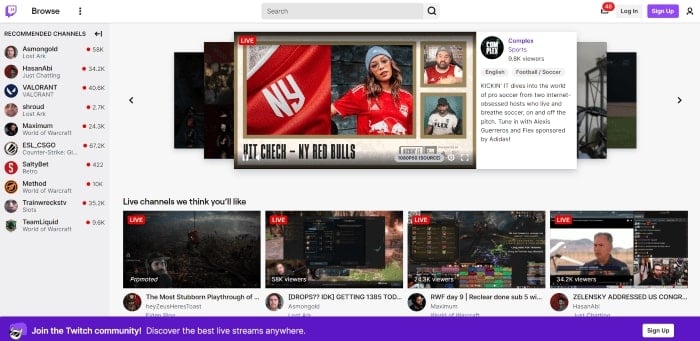
Twitch is a mega-popular live streaming service for content creators.
Originally, Twitch was a platform for gamers to broadcast their playthroughs. And while gaming is still the dominant niche on the site, you’ll also find musicians, artists, and other creators who stream on Twitch.
Twitch is ad-free by default. But, it does have an affiliate program, allowing approved streamers to monetize their channels with subscriptions and ads.
Pros
- No ads by default
- Allows users to live-broadcast their content
- Social network with a communal feel
- An affiliate program allows the user to offer subscriptions to followers for revenue
Cons
- Low threshold for controversy on social network
- Smaller payout compared to YouTube
5. Vevo
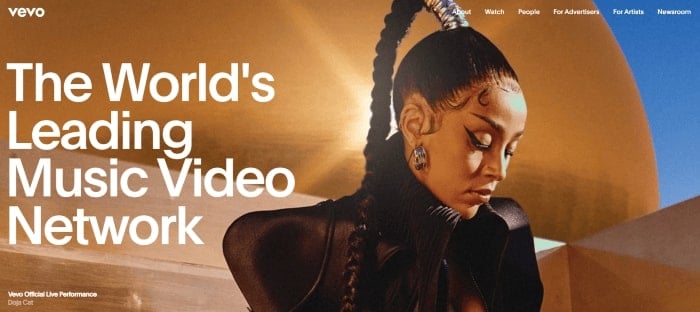
Vevo is a music video hosting networking with licensing partnerships from Universal Music Group, Sony Entertainment, and Warner Music Groups.
You probably recognized Vevo from their YouTube channel, but Vevo distributes music video content across many apps and devices like Roku, AppleTV, and T-Mobile phones and tablets.
Pros
- Ideal for music-lovers
- High-definition content guaranteed
- Simple to use website interface
- 500,000+ music videos
- Available on YouTube, Roku, Apple TV, Fire TV, etc.
Cons
- Only offers music
- It doesn’t allow you to upload personal music videos
6. Videoshub (Formally Metacafe)
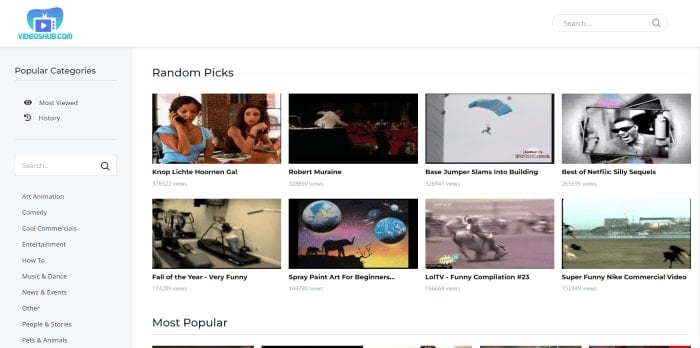
Videoshub is an excellent option if you’re just looking for some funny, lighthearted videos, product reviews, or quick how-tos to stream and share with others.
Videos on this platform are up to 90 seconds long and have middling quality (compared to other media on this list). That said, Videoshub does guarantee you won’t find any duplicates.
Pros
- Funny videos and short how-tos
- No harmful content
- Community-based
- Content categorized
- Attracts around 40 million viewers
Cons
- Limited content genres
- Limits video uploads to 100MB
- 90-second limit on video length
- Uses ads
- Scarce viewership compared to YouTube
7. D.Tube

D.Tube is an ad-free video platform that uses blockchain technology, allowing users to earn cryptocurrency from their content. Its decentralized approach means less risk of server outages interrupting live streams.
D.Tube also prioritizes free speech (rejecting YouTube’s AI-based censorship) and user data privacy.
Pros
- It lets you watch a video without storing it in history
- Lets you sync video with Steemit (blockchain-based social media site)
- Ad-free, decentralized live streaming video-sharing
- Based on blockchain
- Users can earn cryptocurrency rewards
- No censorship
Cons
- Users have reported frustration with uploading videos to the app
- Not enough videos (far smaller than YouTube)
- UI could use some designer love
8. Instagram Video (formerly IGTV)

Instagram Video was the by-product of IG’s pivot when its launch of IGTV ran into unexpected competition from TikTok and other short-form video platforms. So Instagram pulled the plug on IGTV, choosing instead to focus on its four main video formats:
- Instagram Stories
- Instagram Feed Videos
- Instagram Reels, and
- Instagram Lives
Pros
- Let’s you watch videos full-screen in vertical mode
- Easily accessible to Instagram users
- Upload videos of up to an hour-long
- It lets you upload videos on the web or start your own channel
- Native live streaming video sharing on Instagram
Cons
- It doesn’t allow you to upload videos from the app
- A vertical aspect ratio isn’t always the best fit
- 10-minute maximum for regular accounts
9. Facebook Watch
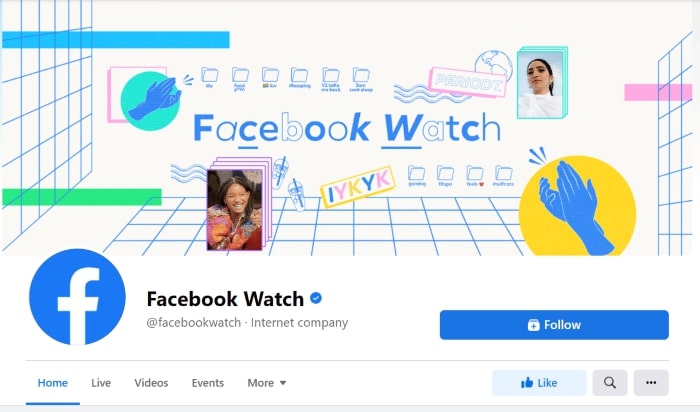
Facebook Watch is a natural choice for those who use Facebook and want to make a video-sharing platform part of their marketing strategy. The algorithm suggests trending videos based on each users viewing history and interests.
While the interface is different, there’s enough overlap in the audience and the content to give Facebook Watch an edge as an alternative.
Pros
- It makes it easy to search for videos
- Ideal for finding social media personalities/influencers
- Option to monetize with ads
- Support for files up to 10GB and 4 hours long
- Livestreaming
Cons
- Very limited (content, variety, viewership)
- Clunky embeds
- Max resolution capped at 1080p
10. TED
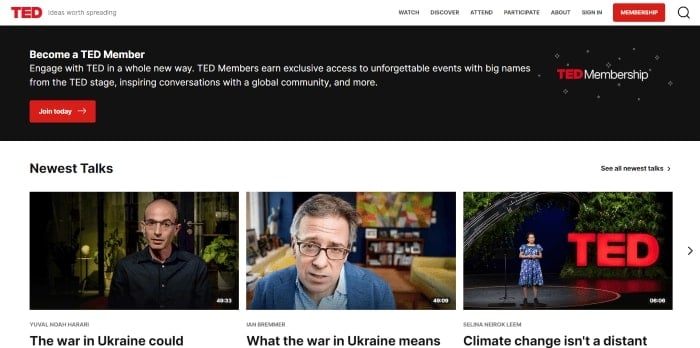
TED is a well-known non-profit media organization that puts a global knowledge base at your fingertips. It’s one of the best free YouTube alternatives for viewers looking for fresh ideas and insights or anyone wishing to learn something new.
Currently hosting over 3,000 talks, TED covers topics ranging from business and technology to design, personal health, and global issues.
Pros
- Wide range of video content from thought leaders across the globe
- Beloved all over the world as a source of knowledge and insight
Cons
- It doesn’t allow users to upload their videos
11. Utreon
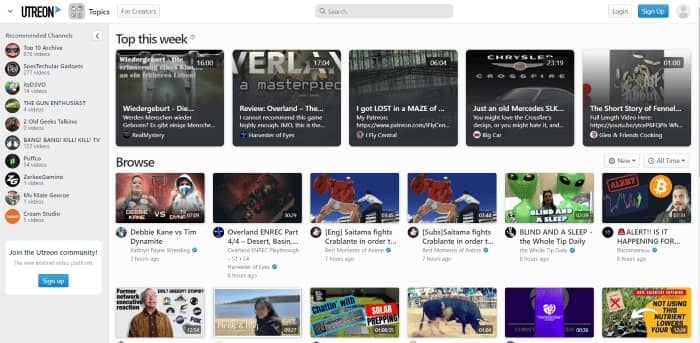
Utreon offers its users advanced content creation tools and an engaging community. And the videos you upload to YouTube will even sync to your Utreon channel — up to 4K resolution.
Utreon’s strict privacy policy means they don’t sell your data under any circumstances. And you have the option of monetizing your content with direct subscriptions.
Pros
- Softer rules compared to YouTube (for video removal)
- Allows you to monetize your content with subscriptions and keep 75%
- Strict privacy policy
- Professional tools available to creators
- Easy sign-up process
Cons
- Limited content may translate to limited viewership
- Smaller staff results in slower response time
- It still has some bugs to work out
12. Odysee
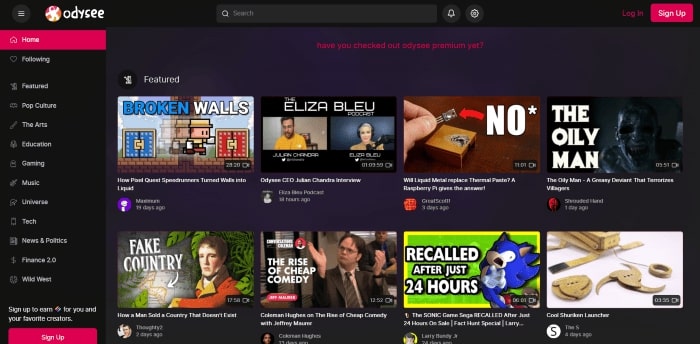
Odysee runs on LBRY, a blockchain protocol, allowing users to upload and publish audio and video content, offer free content to viewers, build apps, and set prices per download or stream.
You can also earn cryptocurrency through LBRY Credit just by using the platform.
Pros
- App builders can set the price per download or streamIt runs on a blockchain protocol called LBRY
- Give content away for free
- Users can earn cryptocurrency
- Ideal for creators with interest in cryptocurrency/blockchain
Cons
- The platform can be glitchy
- Auto-posting to Odyssee from YouTube makes it more challenging to build an audience
13. 9Gag Video (Formally (9Gag TV)
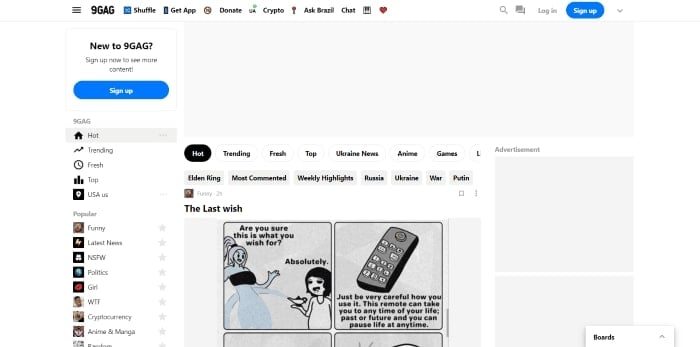
9GAG’s tagline is “Go fun the world,” which gives you some idea of their overall vibe. They’re not influencer-heavy like TikTok. With a focus on sharing images, GIFs, memes, and short videos from other social networks, 9GAG feels more like Twitter.
Content categorization makes it easy for you to find the content you want.
Pros
- Great place to crowdsource hilarious ideas worth trying and sharing
- Content is categorized for ease of browsing and searching
- A popular source of funny memes, GIFS, and short, shareable videos
Cons
- Not an ideal video player platform for building a brand
- Basic interface
14. The Internet Archive
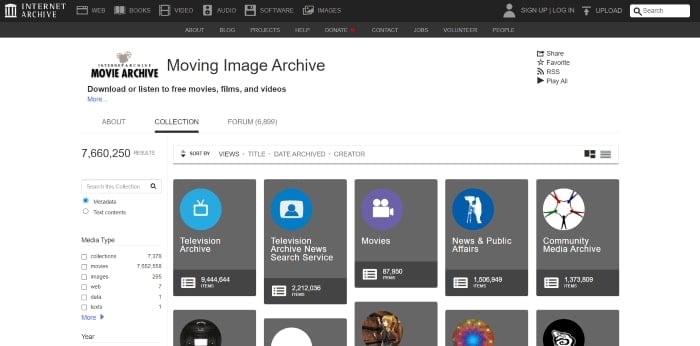
The Internet Archive is what it sounds like — an archive of movies, documentaries, and videos you might not be able to find anywhere else. Search by topic, year, and language to find specific content, or upload your own.
Pros
- Access to video content not found elsewhere
- Archived content is categorized to help you find what you’re looking for
- Users can upload their content
Cons
- The website’s UI has an outdated look
- You probably won’t see your favorite YouTubers here.
- Random selection
15. PeerTube
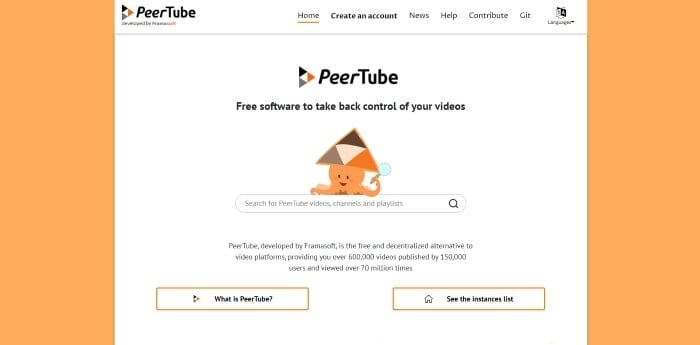
PeerTube, allows you to upload any kind of video without stressing censorship or being banned. It’s ad-free and open-source, meaning anyone can contribute to the code.
PeerTube’s video platform focuses on peer-to-peer interaction. Each user and their content form an “instance,” which can connect and interact with each other.
Pros
- Ad-free
- Open-source
- Supports high-quality videos
- No recommendation algorithms
- Completely free to use
Cons
- Complicated installation process compared to other YouTube alternatives
16. Crackle
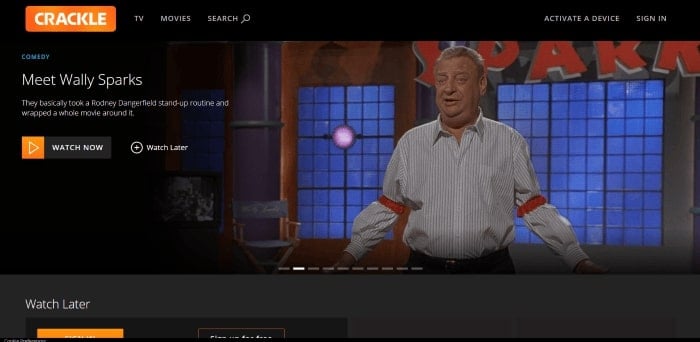
Crackle offers on-demand entertainment videos at no cost — where you’ll find familiar titles and some lesser-known movies. In addition, you can view TV shows and TV series from established production companies like Columbia Pictures, Funimation Films, and Tri-Star.
Pros
- It lets you watch videos without creating an account
- Members can create watchlists and keep track of videos watched
- Content from established video production companies
Cons
- Designed for viewers, not for content creators
17. Twitter Video
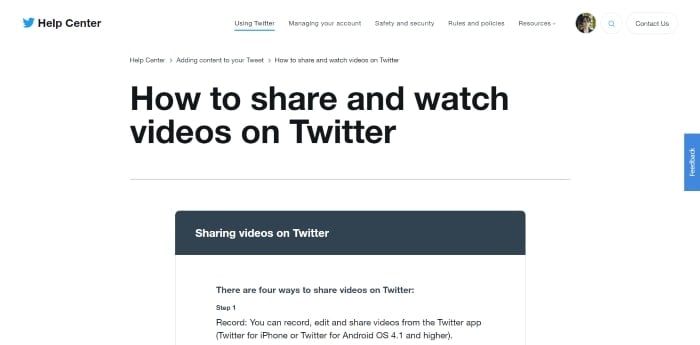
Twitter Video lets you upload and share your videos, images, and content using the icons in the tweet editor. Live streaming is also an option using the improved camera icon available with Twitter’s mobile app.
The maximum video length is 140 seconds with a complete resolution of 1200p.
Pros
- Livestreaming with the camera icon in the app’s tweet editor
- Low-fi videos do well
- Twitter users enjoy native video sharing
- Ideal for creators of “short, snappy” videos
Cons
- Video length capped at 140 seconds
- Max resolution checked at 1200p
Which YouTube Alternatives Will You Try First?
Will any video hosting sites on our list mop the floor with YouTube? Not any time soon — and that’s the truth! But that doesn’t mean there aren’t advantages.
For example, some of the YouTube alternatives we’ve looked at are more secure and less ad-heavy. And some are more content creator-friendly, while others focus on maximizing viewer satisfaction.
So which of these 17 YouTube alternatives will you test drive? Why or why not? Better yet — did we miss any?
Let us know what platforms you love and loathe, and fill us in on the really cool ones we may have missed!
The post 17 Best YouTube Alternatives for Content Creators & Consumers appeared first on Smart Blogger.

No comments:
Post a Comment